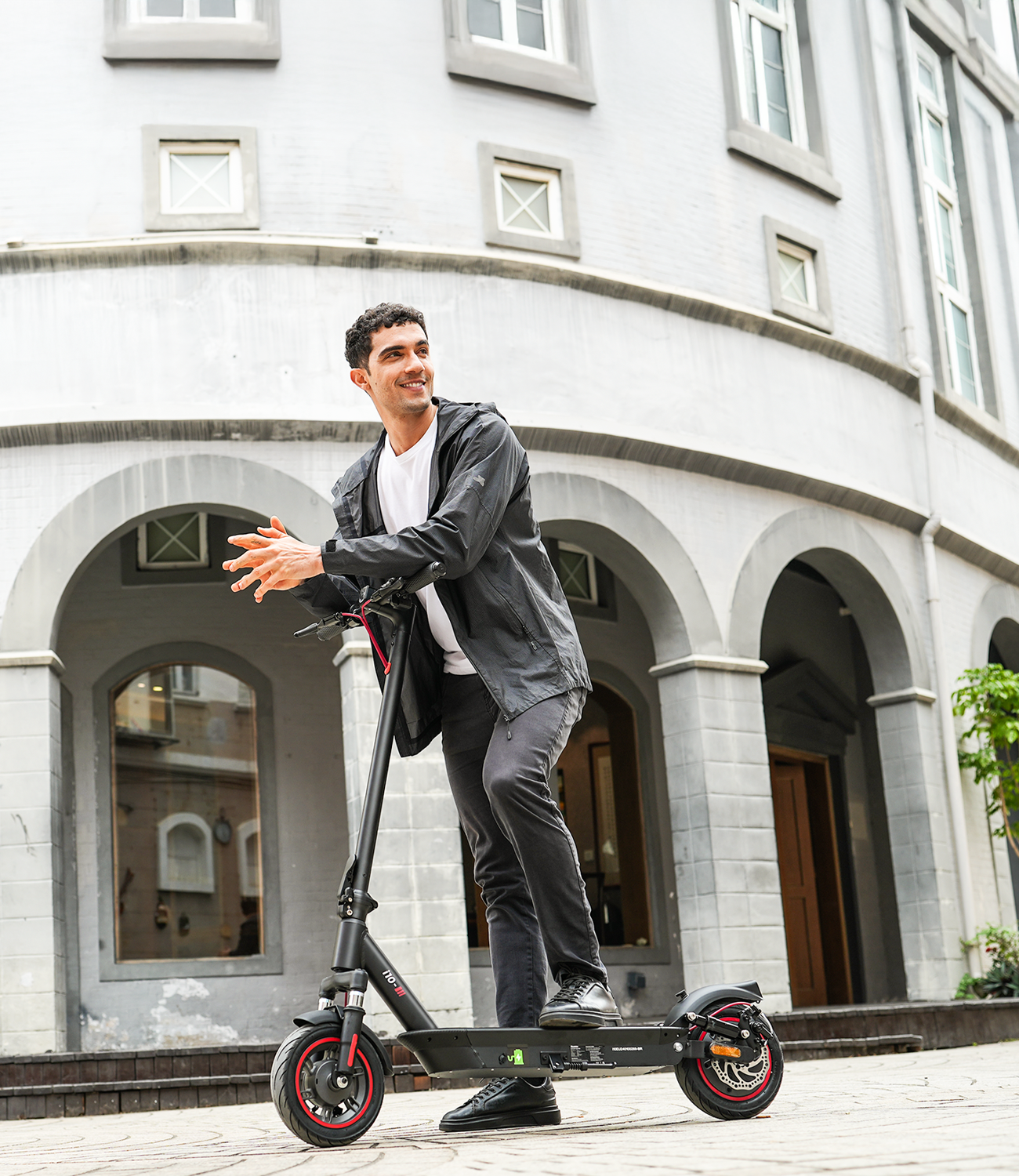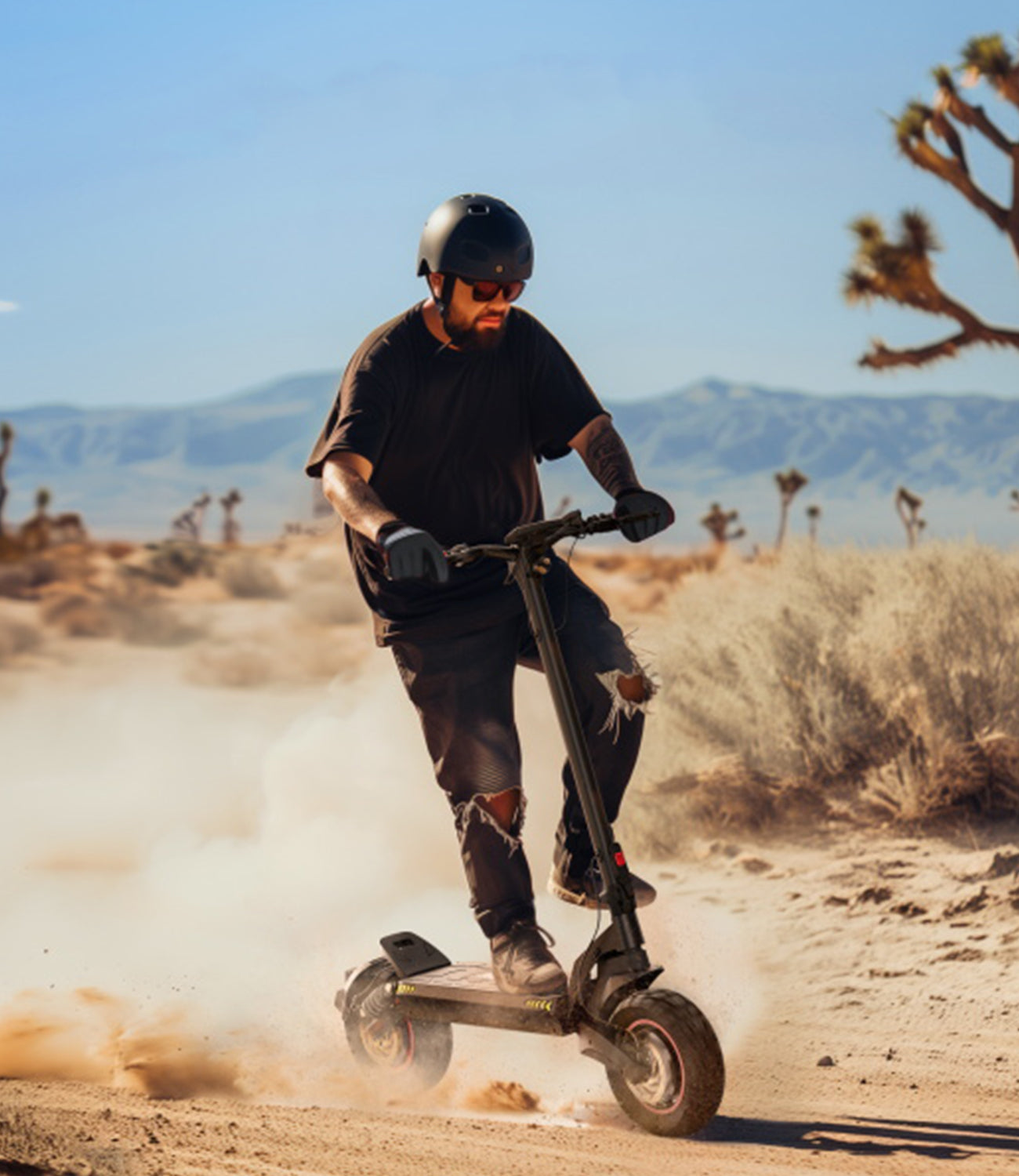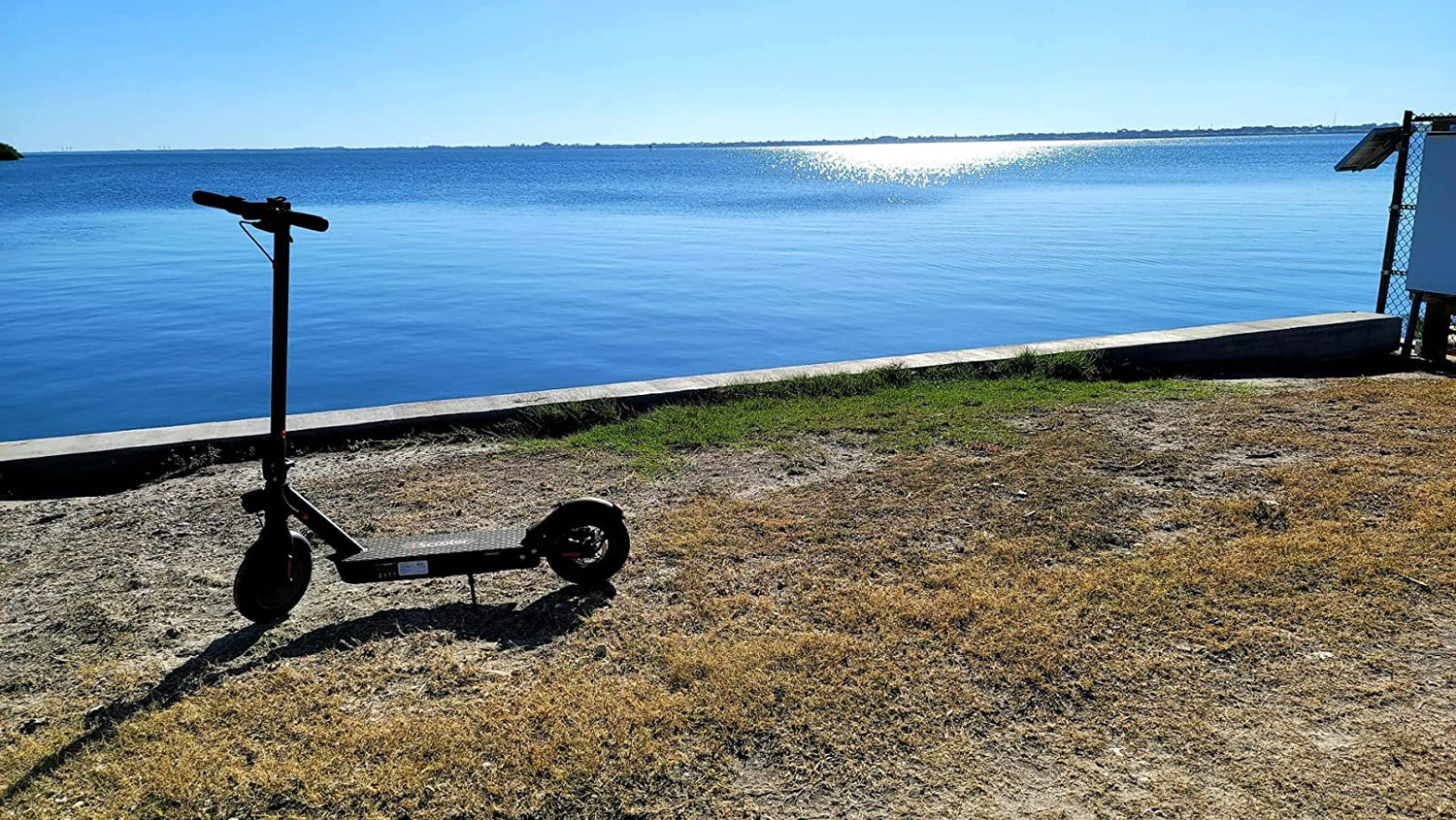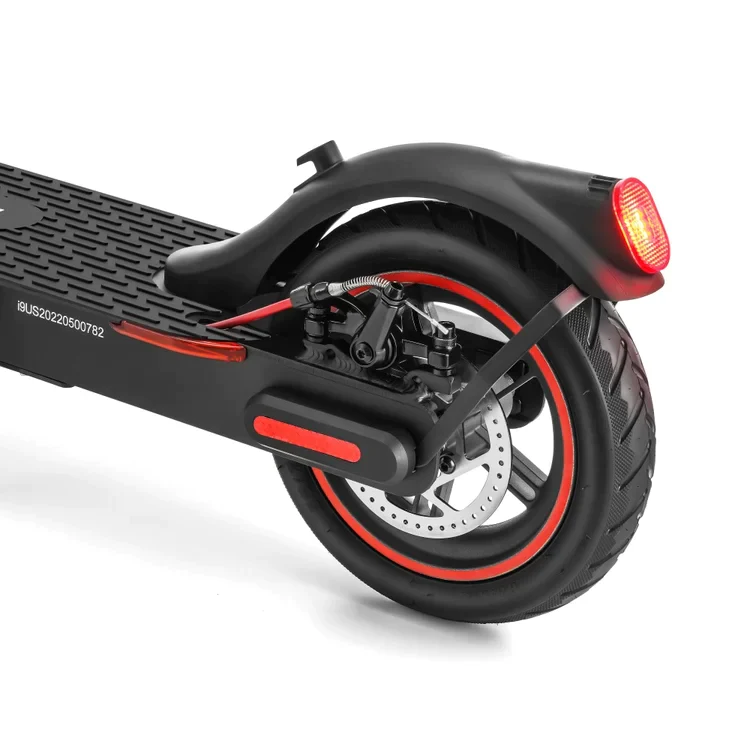Rain – Unpredictable weather. Your e-scooter is going to get wet unless you never leave the garage. Even if you're very fortunate and never have to deal with a storm or a passing drizzle; avoiding puddles, splashes, and sprays will be difficult at times.
So, how does this affect your e-scooter, Let's take a look at how your e-scooter handles water and when you should be concerned about how it could affect its performance.
Most electric scooters have an IP rating, which will enable you to take precautions based on how well your model protects itself against water. You can find the IP rating in your manual.
| IP Rating | Description |
| IPX4 |
Resistant to splashes from any direction
|
| IPX5 |
Resistant to a sustained, low-pressure water jet spray
|
| IPX6 |
Resistant to high-pressure, heavy sprays of water
|
| IP54 |
Protected from water spray from any direction
|
| IP55 |
Protected from low-pressure water jets from any direction
|
| IP56 |
Protected from high-pressure water jets from any direction
|
| IP57 |
Protected from immersion between 15 cm and 1 m in depth
|
Also, bear in mind that storing any e-scooter in damp, humid conditions for an extended period is likely to affect its operation, particularly that of the battery. Avoid leaving your e-scooter in such conditions and always give it sufficient time to dry out before the next use.
Keep a cloth handy to wipe down your scooter after exposure to rain and moisture, go around lakes instead of through them and you’ll get years of high performance out of your e-scooter.
Two significant parts of your scooter that are most susceptible to damage are the frame and electrical components.
Electrics and water are a match made in hell, and when they become damaged, you’ll need to carry out repairs at the very least. In worst-case scenarios, you might have to replace all electrical components or purchase a new scooter.
The frame of your scooter is susceptible to water damage too, and it will corrode and cause long-term issues with rust.
Luckily, there are plenty of helpful tips available to help you protect your means of transportation and enjoying smooth sailing – or scooting.
- Check the electric scooter for any leaks or cracks.
- Apply a sealant to any cracks or holes in the electric scooter.
- Cover the electric scooter with a waterproof cover.
- Store the electric scooter in a dry place when not in use.
How To Waterproof Your Electric Scooter?
In general, I recommend starting with the simpler ones first, and saving the more advanced methods for waterproofing that require you to open your scooter and go through its internals and electronics as last-resort methods.
Moreover, There are several methods, starting with simple ones that require no modification to the scooter, such as drying the scooter, not folding it when wet, dressing for rainy weather, and using a waterproof cover.
For more advanced methods, we recommend using O-rings, silicone or superglue to seal non-functional holes, using transparent sticky plastic covers or adhesive tape to protect the screen and controls, and using a silicone-based conformal coating to waterproof connectors and solders.
Final Thoughts
If you need to perform some basic waterproofing functions, following the tips above will ensure your e-scooter is protected in wet weather and snow.
Most importantly, enjoy the convenience electric scooters offer! If maintaining a car is too costly, and your idea of a nightmare is battling your way through the crowds to access public transport, then the e-scooter could prove to be the ride of your dreams.





Leave a comment
This site is protected by hCaptcha and the hCaptcha Privacy Policy and Terms of Service apply.